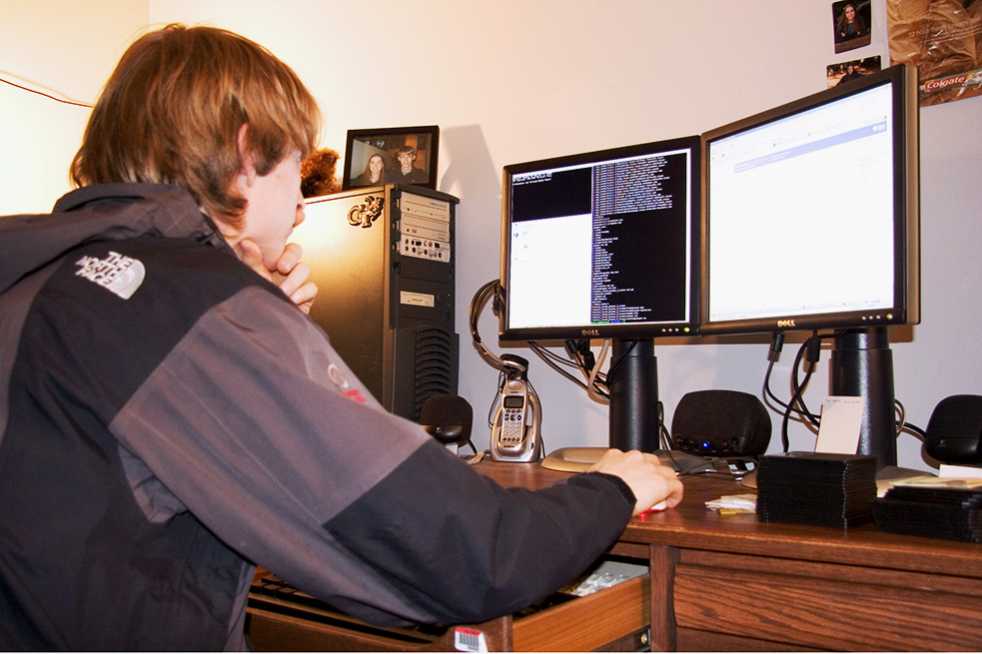One set of students undeterred by this years winter weather are students in the Online Masters of Computer Science (OMSCS) program. Many are still adjusting to the challenge of a Masters program, while also forming online communities, according to Mike Terrazas, director of communications for the CoC. Additionally, Georgia Tech faculty and staff are working to make the online learning service as good as possible. “If we can’t create a graduate program that is deserving of Georgia Tech, then we’re not going to do it,” he asserts. Terrazas explains that the CoC has a vision for the Masters program to open up educational opportunities for people who otherwise wouldn’t be able to pursue a Masters in CS.
“We think there are a lot more potential MS CS students out there that aren’t enrolled in on-campus programs, and so far, that’s proven to be the case, the overwhelming majority of students plan to continue working full time, and the overwhelming majority said the flexibility and the cost of the program is key to their interest.”
The first batch of students is largely in alignment with this vision, they are significantly older on average than on-campus Masters’ students, and most of them work full time, according to statistics made available online by the Tech Office of Government and Community Relations.
Professor Kishore Ramachandran, who is teaching an advanced operating systems class for OMSCS this spring, stated that the online course was going well so far, but that at least some students were finding it a challenge to get up to speed with material in his Masters level class.
Ramachandran echoed Terrazas in highlighting that the OMSCS program has potential to open up educational opportunities for those who might otherwise be overlooked or unable to participate. He argued that the OMS admission process was in some ways more meritocratic than traditional admission processes. Instead of assessing students solely on their academic records, which are difficult to rank across educational institutions, and GRE scores, the OMS CS program lets students who meet Tech’s standards be conditionally admitted to take the first two classes. To remain in the program, students must receive Bs in these classes — thereby demonstrating their competence at the Masters level.
The OMSCS program is a partnership with Udacity, and both Udacity and Tech hope to bring new structure and rigor to the massive open online course (MOOC) format. Terrazas and Ramachandran identified some specific issues with traditional MOOCs which they believe the OMSCS program will improve.
First, traditional MOOCs have exceedingly low completion rates for their courses, often cited as around 3% for Udacity. And second, student assessments within traditional MOOCsare limited by the massive formats because of autograding. OMSCS provides rigorous assessments directly comparable to those offered through the on-campus MSCS program, and uses several proctoring solutions including physical testing centers, to ensure the integrity of student results.
Most of the initial costs of OMSCS are being bankrolled by AT&T, which donated $2 million to GT in support of the program. AT&T hopes that the program will provide an opportunity for continuing education for its employees. Over 500 of the 2359 applicants for the first wave of the OMSCS program were AT&T employees, according to “insidehighered.com”. However, Tech might have to make further adjustments to the cost structure of the program to maintain the program’s current $6,630 price.
An essay entitled “Where are the Savings” at the site includes some logistics calculations that Tech would have to enroll 8,700 students, more than the total number of CS Masters degrees granted in a year in the whole United States, to meet its forecasted revenue targets for year three of the program at the program’s current tuition rates.
While approximately 380 students are enrolled in the first wave of the program starting this Spring, Terrazas said that the OMS CS program might grow significantly over the coming years.
“The target is enrollment sufficient to make the program sustainable. Whether that is some sort of rolling enrollment of a couple thousand, or more than that, we’re not quite sure yet…”
